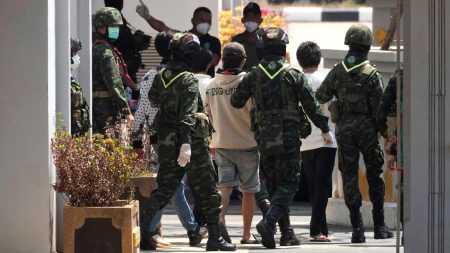Heavy Rains Bring Devastation to Buenos Aires: A Tragic Toll
In recent days, the eastern coast of Argentina has been battered by relentless and heavy rains, culminating in one of the most devastating floods to hit the region in recent memory. The city of Bahía Blanca, located south of the capital Buenos Aires, has been particularly hard-hit, with the deluge claiming the lives of at least 15 people, according to officials. The situation remains dire, with rescue teams racing against time to locate dozens of individuals reported missing, including two young girls and two adults who were swept away by the powerful floodwaters. The rains, which began on Friday, have unleashed a torrent of water that has overwhelmed the city’s infrastructure and left residents in a state of despair.
Rescue Efforts Underway Amidst the Chaos
As the waters continue to rise, rescue teams have been working tirelessly to evacuate those stranded by the floods. Over 1,450 people have been safely evacuated from Bahía Blanca, including patients from a local hospital that was inundated by the rising waters. The evacuations have been a massive operation, involving emergency services, volunteers, and local authorities, who are doing their best to reach those in need. Despite the progress, the search for the missing continues, with hopes that more lives can be saved. The scenes are heart-wrenching, as families wait anxiously for news of their loved ones, while others struggle to come to terms with the loss they have already suffered.
The Fury of Nature: Unprecedented Rainfall
The scale of the disaster is made all the more shocking by the sheer volume of rainfall that has fallen in such a short period. In the span of just a few days, Bahía Blanca has been deluged with approximately 12 inches (300 millimeters) of rain, a staggering amount that dwarfs the region’s historical monthly average of about 5 inches (129 millimeters). This unprecedented downpour has transformed streets into rivers, submerged homes, and left vast swathes of the city underwater. The force of the water has been so intense that entire neighborhoods have been rendered uninhabitable, with the floodwaters showing no signs of receding quickly. The sheer intensity of the storm has left many in awe of the power of nature, even as they grapple with the devastation it has wrought.
A Glimmer of Hope: No Further Rain Forecast
Amidst the chaos and despair, there is a glimmer of hope. Weather forecasters have indicated that no further rain is expected in the next 72 hours, providing a much-needed respite for the battered city. This break in the weather offers a crucial window of opportunity for rescue teams to intensify their efforts and for the waters to begin receding. While the immediate danger may be easing, the long-term impact of the floods will undoubtedly be felt for weeks and months to come. For now, the absence of further rain is a small but significant blessing, offering a chance for the city to begin the slow and arduous process of recovery.
The Road to Recovery: A Community United in Grief and Hope
As the waters slowly begin to recede, the people of Bahía Blanca are coming to terms with the scale of the destruction. Homes have been destroyed, livelihoods disrupted, and families torn apart by the tragedy. Yet, even in the midst of such grief, there are signs of resilience and solidarity. Communities are coming together to support each other, sharing what little they have and offering comfort to those who have lost so much. Local businesses, charities, and volunteers are rallying to provide aid, while authorities are working to restore essential services and infrastructure. The road to recovery will be long and fraught with challenges, but the indomitable spirit of the people offers a beacon of hope in these dark times.
A Call for Action: Learning from Tragedy
As the city begins to rebuild, questions are already being asked about how such a tragedy could have occurred and how similar events can be prevented in the future. The heavy rains that caused the floods are a stark reminder of the fragility of our environment and the importance of being prepared for extreme weather events. Improved infrastructure, better disaster planning, and stronger community resilience are just a few of the lessons that must be learned from this tragedy. The loss of life and the suffering of so many demand that we take these lessons to heart and work towards a safer, more sustainable future. For now, though, the focus remains on supporting those affected and honoring the memory of those who have been lost.















